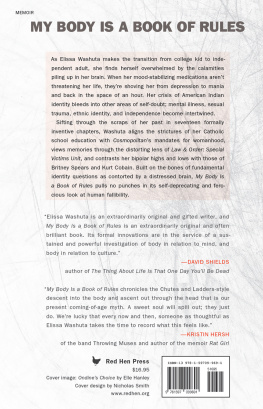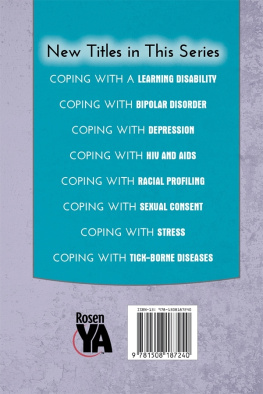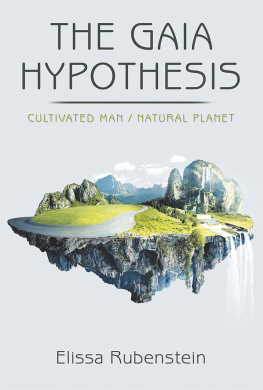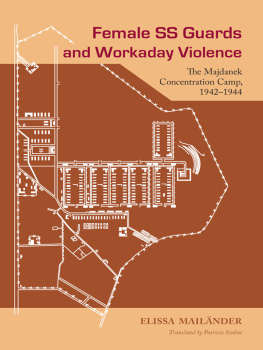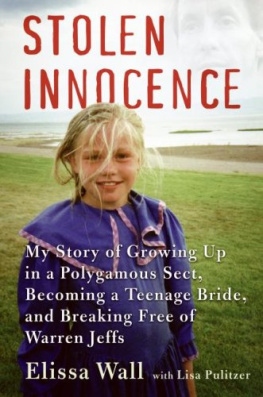Elissa Washuta - Shapes of Native Nonfiction
Here you can read online Elissa Washuta - Shapes of Native Nonfiction full text of the book (entire story) in english for free. Download pdf and epub, get meaning, cover and reviews about this ebook. year: 2019, publisher: University of Washington Press, genre: Romance novel. Description of the work, (preface) as well as reviews are available. Best literature library LitArk.com created for fans of good reading and offers a wide selection of genres:
Romance novel
Science fiction
Adventure
Detective
Science
History
Home and family
Prose
Art
Politics
Computer
Non-fiction
Religion
Business
Children
Humor
Choose a favorite category and find really read worthwhile books. Enjoy immersion in the world of imagination, feel the emotions of the characters or learn something new for yourself, make an fascinating discovery.
- Book:Shapes of Native Nonfiction
- Author:
- Publisher:University of Washington Press
- Genre:
- Year:2019
- Rating:4 / 5
- Favourites:Add to favourites
- Your mark:
- 80
- 1
- 2
- 3
- 4
- 5
Shapes of Native Nonfiction: summary, description and annotation
We offer to read an annotation, description, summary or preface (depends on what the author of the book "Shapes of Native Nonfiction" wrote himself). If you haven't found the necessary information about the book — write in the comments, we will try to find it.
Shapes of Native Nonfiction — read online for free the complete book (whole text) full work
Below is the text of the book, divided by pages. System saving the place of the last page read, allows you to conveniently read the book "Shapes of Native Nonfiction" online for free, without having to search again every time where you left off. Put a bookmark, and you can go to the page where you finished reading at any time.
Font size:
Interval:
Bookmark:

SHAPES OF
NATIVE
NONFICTION
SHAPES OF
NATIVE
NONFICTION
Collected Essays by
Contemporary Writers
Edited by
ELISSA WASHUTA AND THERESA WARBURTON
UNIVERSITY OF WASHINGTON PRESS
Seattle
 | Shapes of Native Nonfiction was supported by a grant from the Tulalip Tribes Charitable Fund, which provides the opportunity for a sustainable and healthy community for all. |
Copyright 2019 by the University of Washington Press
Printed and bound in the United States of America
Cover design and illustration by Katrina Noble
Interior design by Katrina Noble
Composed in Alegreya, typeface designed by Juan Pablo del Peral
23 22 21 20 195 4 3 2 1
All rights reserved. No part of this publication may be reproduced or transmitted in any form or by any means, electronic or mechanical, including photocopy, recording, or any information storage or retrieval system, without permission in writing from the publisher.
UNIVERSITY OF WASHINGTON PRESS
www.washington.edu/uwpress
LIBRARY OF CONGRESS CATALOGING-IN-PUBLICATION DATA
Names: Washuta, Elissa, editor. | Warburton, Theresa, editor.
Title: Shapes of Native nonfiction : collected essays by contemporary writers / edited by Elissa Washuta and Theresa Warburton.
Description: Seattle : University of Washington Press, [2019] | Includes bibliographical references.
Identifiers: LCCN 2018047472 (print) | LCCN 2018059193 (ebook) | ISBN 9780295745770 (ebook) | ISBN 9780295745763 (hardcover : alk. paper) | ISBN 9780295745756 (pbk. : alk. paper)
Subjects: LCSH: American literatureIndian authors. | Indians of North AmericaLiterary collections. | Creative nonfiction, American. | American literature21st century. | American literatureIndian authorsHistory and Criticism.
Classification: LCC PS508.I5 (ebook) | LCC PS508.I5 S53 2019 (print) | DDC 814/.009897dc23
LC record available at https://lccn.loc.gov/2018047472
The paper used in this publication is acid free and meets the minimum requirements of American National Standard for Information SciencesPermanence of Paper for Printed Library Materials, ANSI z 39.481984.
In loving memory of Carol Edelman Warrior,
beloved friend and scholar,
whose work on stories helped shape this collection
SHAPES OF
NATIVE
NONFICTION
Exquisite Vessels
ELISSA WASHUTA AND THERESA WARBURTON
Indigenous peoples understand that there is no difference between the telling and the material. They understand how we all, in fact, live inside and through the narratives we tell and that the importance in telling stories is inseparable from the identity, community, and history they compose and the spiritual, economic, and political realities on which they depend and which they subvert or preserve.
JOANNE BARKER AND TERESIA TEAIWA, NATIVE INFORMATION
Style is simply a way of doing something. The items people make, may they be canoes, houses, masks, or baskets, display regularities and similarities that suggest the makers have followed some set of rules, pattern, and order in their creation. Although a basket is the unique creative product of an individual, its maker followed a set of traditions and cultural conventions that influenced choices throughout the manufacturing process.
JACILEE WRAY, FROM THE HANDS OF A WEAVER: OLYMPIC PENINSULA BASKETRY THROUGH TIME
The basket. The body. The canoe. The page. Each of these vessels has a form, a shape to which its purpose is intimately related. Each carries, each holds, and each transports. However, none of these vessels can be defined solely by their contents; neither can their purpose be understood as strictly utilitarian. Rather, the craft involved in creating such a vesselthe care and knowledge it takes to create the structure and shape necessary to conveyis inseparable from the contents that the vessel holds. To pay attention only to the contents would be to ignore the very relationships that such vessels sustain. Yes, the basket may carry elderberries or trap salmon, but what of the cedar used to weave it? What of the weaver whose skills connect long genealogies of craft and kin? What of the cosmological significance of the elderberries and salmon? Some weavers know how to weave baskets so tightly that water can be boiled in them. How can we think about that water, about the running of rivers and the running of salmon, without thinking of the craft that must go into a vessel that can hold water, whether basket or riverbed? To speak only about the contents of these vessels would be to ignore how their significance is shaped by the vessels that hold them.
Yet it is often on these terms that Native literatures, particularly works of nonfiction, are discussed; as works whose import is related exclusively to their content, a process akin to what Driftpile Cree writer and scholar Billy-Ray Belcourt has described as the impulse toward an uncovering of a genre of experience from the graveyard of Indigenous history. Though the works in this collection certainly touch on these topics (and more), Shapes of Native Nonfiction aims to move beyond an ordering that depends only on content, only on the information that Native authors can provide readers about Native peoples. Instead, we bring together the essays here to draw attention to the connection between, as Lenape scholar Joanne Barker and I-Kiribati scholar Teresia Teaiwa put it in the passage we have placed as an epigraph, the telling and the material, between the content and the form.
For them (and for us), this attention to form (the telling) and how it shapes the content (the material) enables a move away from a focus on a static idea of Native information and, instead, emphasizes the dynamic process of Native in formation. This shift destabilizes the colonial demand for factual information about Native life in favor of a framework that insists upon an understanding of indigeneity as a dynamic, creative, and intentional form which shapes the content that is garnered through its exploration. Here, Barker and Teaiwa lay the groundwork for apprehending the relationship between nonfiction and dynamic form:
This is native information: autobiographical, fictional, anthropological, political, comical, statistical, governmental, theoretical, historical, ethnographic.... This is native in formation: as we have been informed by, as we are informing, as we are in-formed. Its about process, not stasis. Its not about romanticizing the dead of our history onto the sides of defaced mountains carved up for all time. Its about the way we move with time and with each other.
With this in mind, we have paid special attention to the form of this collection itself in order to mirror the interest in form in the pieces herein. Throughout, we have understood this project as one meant to holdto hold together and to hold in place. We connected to this deeply through the material vessel of the basket. As both a utilitarian and creative form that is connected to community and the individual, we see the basket not as a metaphor for this collection but rather as a structure (or form) through which to understand how the pieces included here come together in this space. As a practical matter, we also envisioned structuring the collection around the basket as a way to practice responsibility to place. We first conceptualized this project while living on Coast Salish territories in what is currently Washington State. Among Northwest Coast peoples, a wide variety of baskets are used for various purposes, such as root gathering, berry picking, and clamming. Elissa had the chance to hold one of Suquamish elder and master weaver Ed Carrieres baskets through which he told and contained the story of his life. Here we saw the shape of the material connection not only between place and the literary project we undertook but also to the conversation about form that we wanted to bring to the fore. Though written about extensively, the basket has often been of interest as an anthropological rather than a literary objectmuch like Native nonfiction.
Font size:
Interval:
Bookmark:
Similar books «Shapes of Native Nonfiction»
Look at similar books to Shapes of Native Nonfiction. We have selected literature similar in name and meaning in the hope of providing readers with more options to find new, interesting, not yet read works.
Discussion, reviews of the book Shapes of Native Nonfiction and just readers' own opinions. Leave your comments, write what you think about the work, its meaning or the main characters. Specify what exactly you liked and what you didn't like, and why you think so.


